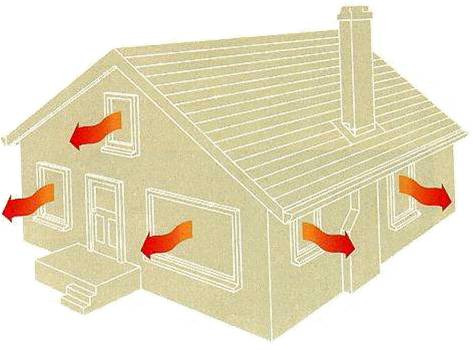Energy reduction through solar shading and window coverings may be quantified in two primary categories; reduction of solar energy entering a space and thereby reducing the amount energy used for cooling and reduction of thermal energy leaving the space and thereby reducing the energy required for heating.
About half of the Sun’s energy that reaches the Earth falls within the visible spectrum; the remaining half falls within the infrared – having a wavelength longer than that of visible light – and ultraviolet (UV) – having a wavelength shorter than that of visible light – part of the spectrum. In summer, most regions need to filter out UV radiation from entering interiors due to the intense heat it creates. While modern spectrally selective glazing can be made to allow in only visible light (filtering out UV and infrared radiation), visible light also produces heat. Materials inside the building absorb heat from the visible light, causing the temperature of the materials – and building interior – to rise. As the temperature rises the materials produce thermal infrared radiation, which is then prevented from leaving the interior through the windows by the UV and infrared blocking glazing.
Thermal heat reduction is achieved through creating an isolating space along the window. This is calculated through the R Value or measurement of the heat absorbed by the material. R Value is the measure of apparent thermal conductivity and the higher the R Value the less heat is lost through the window or assembly. Decorating with Fabric offers the most efficient and extensive range of solar shading and window covering products in the market, providing the highest R Values of the industry.
Using selective solar shading and window covering applications from Decorating with Fabric the reduction of solar gain can be achieved through the use of fabrics with low Solar Heat Gain Coefficients (SGHC).
Decorating with Fabric offers a number of distinctive and designer friendly fabrics which can achieve very low SHGC through a variety of openness, weave structure, color and even enhanced reflective coatings.


